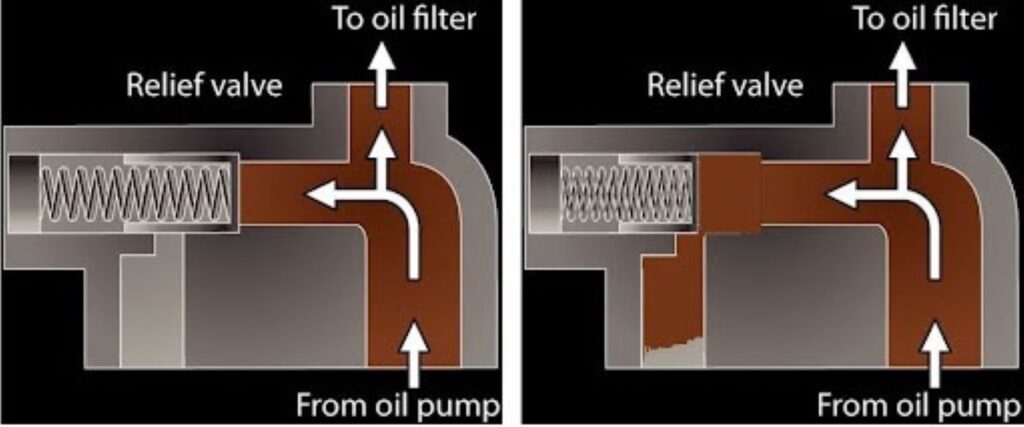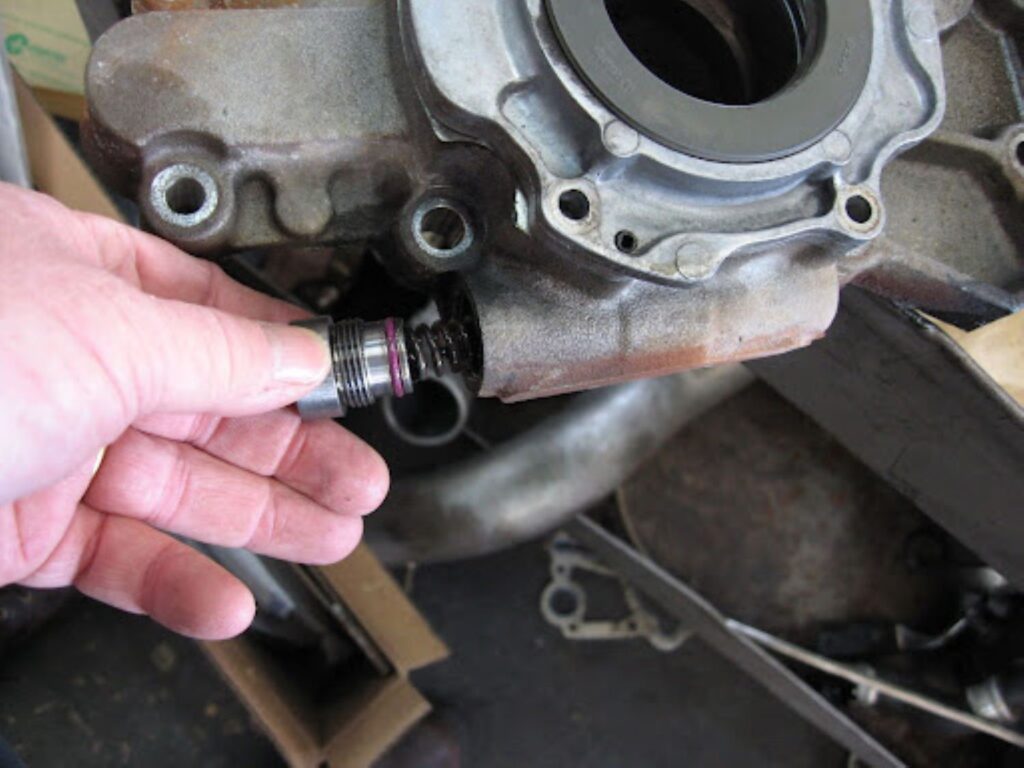Driving with high oil pressure comes with a lot of dangers. For example, the oil can have a difficult time circulating, and the lack of lubrication can make the engine overheat.
Knowing what raises oil pressure will help you take steps to prevent it.
What Causes High Oil Pressure?
High oil pressure can occur due to malfunctioning parts or issues with the oil itself.
Bad Sending Unit
The sending unit measures the engine’s oil pressure level, so if it malfunctions, it could result in inaccurate oil pressure readings. For example, a bad sending unit might relay that oil pressure levels are high even though they’re at normal levels.
Clogged Oil Passages
Oil circulates throughout the engine to lubricate different components. As it flows, it occasionally accumulates all sorts of gunk and dirt. This will typically starve some components for oil rather than causing high pressure, but it depends on where the clogging is happening.
Over time, these contaminants coalesce and create deposits of sludge, dirt, and carbon that can clog the engine’s oil pathways. If the passages are restricted, it becomes difficult for the oil to circulate, which increases its pressure.
Malfunctioning Relief Valve
The engine’s relief valves limit the levels of compressed air. It reduces oil pressure when it gets too high by providing places for the fluid to flow when pressure levels rise.
If the relief valve malfunctions or gets damaged, there will be fewer places for the oil to flow, raising the pressure. This is the most common thing that causes high oil pressure, but for this to happen, the oil pump relief valve has to stick closed rather than open.



Contaminated Oil Filter
The oil filter prevents dirt, gunk, and other impurities from mixing with the oil and circulating throughout the engine. That being said, the oil filter has its own internal bypass valve that allows oil to bypass a clogged filter element rather than starving the engine for oil.
Over time, the debris it gathers renders it less effective at filtering the oil. This causes contaminants, like dust and metal particles, to mix with the oil, clogging the pathways.
Wrong Oil
The type of oil you use for your engine can affect oil pressure levels. If you use oil that’s too thick for your engine, not only will your vehicle’s performance suffer but the oil pressure will also rise, but not too much. The oil pump relief valve regulates the pressure if everything else is okay. It’s important to use oil that’s compatible with your engine.
What Happens to Your Vehicle When the Oil Pressure is Too High?
There are problems that come with driving a vehicle with high oil pressure, as well as a lot of inconveniences. The most common thing is that it’ll blow the engine oil filter off without warning. The problem is, you may not even know you have high oil pressure until something gives way, particularly if you don’t have an oil pressure gauge on the instrument cluster.
When driving a vehicle with high oil pressure, the most common issue is that the engine oil filter might blow off without warning.
–Richard McCuistian, ASE Certified Master Automobile Technician
How to Prevent High Oil Pressure

It’s easier to take measures to prevent high oil pressure over resolving the problems it can cause. Here are some ways to keep your oil pressure at ideal levels.
Change the Oil Regularly
It’s not a bad idea to inspect your vehicle’s oil and oil filter often and then to see if it’s getting clogged or contaminated.
To check on your oil and oil filter, you’re going to have to lift your ride with a jack. From here, you can drain all the old oil and have a closer look at the filter to see if it’s due for a replacement.
It’s generally a good idea to replace your oil and oil filter once every six months or every 10,000 miles.
Perform Maintenance Every Year
While it is possible to conduct maintenance yourself, it’s better to leave it to experts who can perform complete diagnostics. This way, they can tell you exactly what might be wrong with your vehicle and what parts you need to replace to fix the problem.
Where to Get Replacements for Parts Damaged by High Oil Pressure
If you don’t take any steps to lower the oil pressure of your vehicle, there’s a risk that certain parts will malfunction. For example, the engine oil filter might blow off without warning. Because of this, it’s important to change your oil as soon as possible and replace the oil filter. It’s also a good idea to replace any components damaged by high oil pressure.
Fortunately, finding high-quality yet affordable replacement parts is easy with the help of CarParts.com.
It only takes a few minutes to find what you need and check out securely. Simply download our mobile app or visit our website. Use our vehicle selector and search filters to view compatible parts that match your preferred brand, price, features, and specs.
We make it a point to source our replacement parts from the most trusted manufacturers in the industry. Also, because our warehouses are strategically located all over the US, you can expect to receive your order in just a few days.
Shop now to get high-quality parts for your car!
Any information provided on this Website is for informational purposes only and is not intended to replace consultation with a professional mechanic. The accuracy and timeliness of the information may change from the time of publication.



























